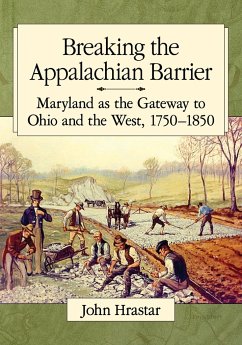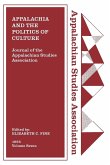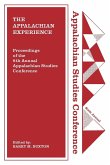In 1750 the Appalachian Mountains were a formidable barrier between the British colonies in the east and French territory in the west, passable only on foot or horseback. It took more than a century to break the mountain barrier and open the west to settlement. In 1751 a private Virginia company pioneered a road from Maryland to Ohio, challenging the French and Indians for the Ohio country. Several wars stalled the road, which did not start in earnest until after Ohio became a state in 1803. The stone-paved Cumberland Road--from Cumberland, Maryland, to Wheeling, Virginia--was complete by 1818 and over the next 30 years was traversed by Conestoga wagons and stagecoaches. The Baltimore and Ohio Railroad--the first general purpose railroad in the world--started in Baltimore in the 1820s and reached Wheeling by 1852, uniting east and west.








